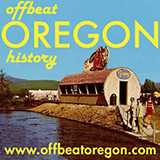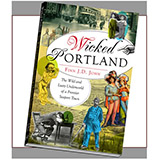RUMINATION
A Day at the Auction
An afternoon spent watching some magnificent animals find new homes, for ridiculously small amounts of money, at the Eugene Livestock Auction
By FINN J.D. JOHN
January 2009
The parking lot at the auction yard on Highway 99 just outside Junction City is rough and rutted, crammed with big 4x4 diesel pickups and horse trailers. A cube van is parked by the side of the building; saddles are set out, plain ones as well as some with feminine touches like ribbons and Indian beading. I drive past, looking for a parking spot. At the far end of the parking lot, across a sea of Jeep Cherokees and F-150s, is a colorfully airbrushed single-wide trailer; from the entrance to the auction house, one can just make out the words “Cowboy Church” painted on it.
I can’t find a spot in the parking lot; it’s crammed full and overflowing onto the grass, where serious 4x4s are parked hub-deep in muddy ruts that only they can get out of. So I drive out onto the highway and park on its generously broad shoulder, then walk to the building. It’s a biggish structure that looks like a small warehouse, sided and roofed with light-brown corrugated metal, with the words “EUGENE LIVESTOCK AUCTION” in two-foot-high brown block letters screwed to the front. Big men with weathered faces and large moustaches under cowboy hats and baseball caps, and trim women in windbreakers with long hair pulled back in pony tails, file in and out of the building. Others stand on the porch and take deep drags on cigarettes, eager to get their addictions soothed as fast as possible and get back inside where the action is. Lots of the men are wearing tan insulated Carhartt duckcloth jackets. Lots of the women are, too. Everyone is wearing jeans and cowboy boots. Everyone but me. I get a little self-conscious about that, but luckily nobody seems to notice me or my nerdy, urban Dockers and soccer shoes.
It’s 4:15 p.m. The Stockman Café, in the north end of the building, will be doing a brisk business in a half-hour or so, but right now it’s deserted. I walk past the dusty, somewhat run-down office on the left, where there’s a long counter lined with cowboys paying for the animals they’ve won today; above them, a dusty stuffed-and-mounted bighorn sheep’s head looks down from the wall like some benevolent spirit totem. Dead ahead is the auction pit. I walk in.
The entrance opens directly onto a walkway in front of the pit, which is about 30 by 20 feet and lined with wood chips. The chips are clean, so I know there must be cement underneath, not dirt. Above the pit, the stadium-style seats rise sharply, almost to the ceiling of the big room. There are about 250 people here, and it’s pretty close to maximum capacity. I walk past a mid-sized pinto mare being turned around in the pit for bidders to see. The auctioneer’s patter fills the air with excited, incomprehensible noise as I make my way up the stairs to the nosebleed section. As I go up the steps, the air — about as chilly in the auction pit as it is outside — warms up noticeably, to the point where I’m uncomfortably hot when I reach the back of the room. I stand behind a big block of seats and watch.
The seats are full of country families. Everyone looks a little different, but the one common denominator is denim. Once again, I feel out of place, and am grateful that the big block of seats hides my lower half. I’m dressed a lot more like a CPA than a cowboy today. Still, nobody notices, or cares.
“Who’ll gimme two senny-fie, two senny-fie, two senny-fie?” the auctioneer mumbles, loud and fast. “Somebody’s gunna gitta whole lotta horse for two’na half.” I look down at the pinto just as it lifts its tail; a cascade of roadapples drops to the pit floor. Someone must have been impressed: “Three. I got two senny-fie, who’ll gimme three hunnerd three hunnerd three hunnerd?”
But it’s to no avail. The horse sells for $275 and is led out into the stockyard pens, to be replaced with a compact, shaggy pony with a little girl riding it. The auctioneer manages to tell us this Shetland mare was born in 2003 and is very well behaved — “and: The cat comes with her. That’s right. Everything but the little girl.”
“And the little girl’s saddle,” I murmur to myself. I can’t see it very well, since she’s sitting on it, but it looks like a beauty, and probably worth more than the pony it’s on — which shortly thereafter is also sold for $275. Out go pony and girl. I never do see the cat. But I think about the story it comes with: “Paid $275 for that cat. Yup, I mighta overpaid a little, but it did come with a free pony.”
As the auctioneer starts to introduce the next horse, a chestnut mare with a blaze on its forehead, I look more closely at the pit. It’s surrounded on all sides by a fence made of four half-inch cables stretched tight with turnbuckles. There are three men in it, all sporting jeans, boots, giant moustaches and headgear — one in a cowboy hat resting a beige-gloved hand on one of the cables, and two “spotters” in puffy parkas and baseball caps constantly scanning the crowd for the raised hands of bidders. “Yip!” they yell when they spot one, pointing at the bidder like Robespierre outing a French Royal. Behind them is a long desk, built into the back wall, topped with two dusty, yellowed computer terminals and, behind those, three clean-shaven middle-aged men wearing steel-rimmed eyeglasses and immaculate cowboy hats: One black, one white, one beige. The middle one, with the black hat, is the auctioneer.
A big sign is painted on the front of the desk: “FIRST 2 ROWS OF SEATS FOR BUYERS ONLY.” Beneath, smaller signs announce that new buyers should register at the office; all livestock must be paid for within 24 hours; and no, one may not take one’s new pony home before it is fully redeemed in cash.
The chestnut mare is gone, having fetched — again — $275. A handler brings the next horse out, another chestnut quarter horse with a blaze, but bigger and sleeker. “April 26, 2007,” the auctioneer announces proudly. So, it’s a yearling, but a big one. “Who’ll gimme one thousan one thousan one thousand — five hunnerd. Who’s got five hunnerd, five hunnerd — three! Three hunnerd, three hunnerd — now two. Yes, ma’am, I have two, now who’ll gimme three? Three hunnerd, three hunnerd — two-fifty—”
“Yip!”
“I got two-fifty, now three. Three hunnerd three hunnerd ….”
The auctioneer works it but the crowd isn’t exactly on fire. A constant murmur of conversation accompanies the auctioneer’s chanting. Ahead of me, on the block of seats I’m leaning on, a towheaded toddler, about two years old, hops up on the back of the bench. Eyes twinkling mischievously, he seizes a double handful of Mommie’s long, lovingly brushed brown hair and starts working it like clothes on a washboard, much to her annoyance. Across the aisle, a fluffy, compact Sheltie dog with a charming white spot on its muzzle snoozes happily on the floor at the feet of its family. The slim, pretty black-haired woman in front of me leans on her husband’s shoulder, beneath his big beige Stetson, and jounces their baby — a little girl with her mom’s black hair, who looks to be about two months old — on her knee. Overheated spectators in the upper rows take pulls on straws stuck in Pepsi cups; the “no smoking” signs keep them from taking pulls on Marlboros, but to judge by the color of the walls and ceiling, this rule must be a fairly new one.
I turn my attention back to the auctioneer just in time to see him sell the chestnut yearling, for $250. In trots another chestnut quarter horse, this one a mare.
As the auctioneer starts his patter again, I look behind him. There’s a sign up there: “All livestock sold as-is.” Above that are signs from advertisers: Four Star Meats, H&E Feeds, Pacific Ag Systems.
My observations are interrupted by an explosive whinny from the mare, which rudely cuts off the auctioneer’s latest attempt to find someone to pay $250 for her.
Apparently inspired by this, a woman several seats below me raises her hand. I see thick permed blonde hair pulled back and tied with Navajo-patterned ribbon into a generous ponytail, but I can’t see her face.
The spotter on the right sees her hand. “Yip!”
The auctioneer doesn’t miss a beat. “Two senny-fie!”
“Yip!” Someone else is bidding on the horse now, too, somewhere out in the crowd where I can’t see from my spot. I wonder if I’m about to see one of those bidding wars people keep telling me about.
The woman in front of me already has her hand back up, and the spotter on the right has already yipped again. “Three twenny-fie, now, three twenny-fie. I have three hunnerd, now three twenny-fie.”
“Yip!” The other bidder has stepped up again.
“Three-fitty, three-fitty, who’ll gimme three-fitty,” the auctioneer resumes. The blonde shakes her head as the spotter points expectantly at her. It’s the other bidder’s horse now, for three and a quarter bills.
Another Shetland pony, two roans and a bay later, I’m heading for the exit again. As I walk past the pit, a man in a blue windbreaker coat with somebody’s farm name embroidered on the back is showing the bidders how well a startlingly fluffy black-and-white paint responds to the reins. Bidders are impressed: The price is inching north of $500 as I head past a pack of middle-aged, tobacco-shriveled cowboys standing on the stairs and walk to the exit. The café is still deserted, but there are even more people in the office paying for horses. Around the building, Cummins and Navistar diesel engines rumble everywhere as bidders pick up their horses. Outside, I find a sheriff’s deputy has ticketed my car for parking on the side of the highway. Mystified, I look around and spot a sign, sun-bleached to unreadability, a quarter-mile away. It must say “no parking,” I think irritably.
I look at the ticket. Ninety-seven dollars for “illegal stopping or parking.” Toss in three bucks, and that’s half the price of the cheapest horse I saw auctioned off today. So they’re selling perfectly good horses for the cost of two parking tickets?
I shake my head. Times must be pretty tight for horse people right now.
-30-






